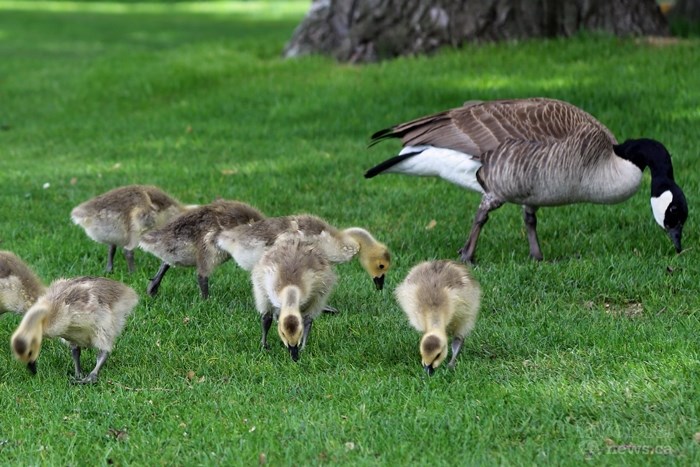
(JENNIFER STAHN / iNFOnews.ca)
April 30, 2016 - 7:00 PM
OKANAGAN - The Okanagan Valley Goose Management Program is halfway through its annual egg addling program.
“Field crews are having great success at finding nests, more than 200 so far,” said Kate Hagmeier, Okanagan Valley Goose Management Program Coordinator. “However, we still rely on the public to help find new or different nest locations. Input from the public allows thorough reach of the program.”
This program is in its 10th year and continues to prevent the nesting Canada goose population from growing. Trained crews search public lands between Osoyoos and Vernon where geese have been known to nest or are likely to nest. Crews work under permit from Environment Canada and do not access private lands without permission.The public may report nesting geese on their property by emailing coordinator@okanagangooseplan.com, calling 1-877-943-3209, or online at www.okanagangooseplan.com.
“This year, most of the reports have been from the northern areas of the program,” said Hagmeier, who is concerned that they will miss nests in the southern regions of the valley. She says people have learned how to “goose-proof their properties” by covering planters and peaking boat covers, so many of the problems landowners have faced with nesting geese are decreasing. “But if geese are shifted off these obvious nest locations, we need to find the new sites. They don’t typically go far from their original location, even year after year.”
Hagmeier notes that the geese targeted in this program are not native to the area.
“These geese are descendants of young geese and eggs that were introduced in the 1960s and 70s. They were brought here from different areas in Canada and the United Sates to encourage the creation of an Okanagan goose population. Hindsight is 20-20, but biologists today would never take a species and introduce it outside of its native range. We understand the perils of introducing non-natives into environments to which they do not belong.”
The egg addling program involves shaking eggs or coating them with non-toxic biodegradable food-grade corn oil within 14 days of incubation to make them non-viable. Once addled, eggs are returned to the nest. Geese continue to incubate until they realize the eggs will not hatch. At this point, it is generally too late in the year to produce more eggs. Adults are not harmed and will continue with their regular life cycle. The U.S. Humane Society supports this minimally invasive population control technique.
The Okanagan Valley Goose Management Program is a partnership between the City of Kelowna, Central Okanagan Regional District, Regional District of Okanagan Similkameen, City of West Kelowna, City of Vernon, City of Penticton, District of Lake Country, Town of Osoyoos, Town of Oliver, District of Peachland, District of Summerland, Westbank First Nation, Glenmore Ellison Irrigation District and Western Canada Turfgrass Association
Information about the program is available at okanagangooseplan.com.
News from © iNFOnews, 2016